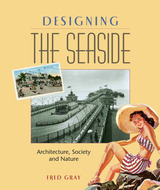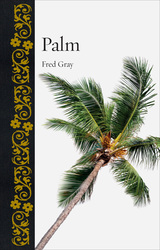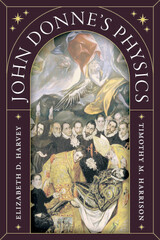2 books by Gray, Fred

Designing the Seaside
Architecture, Society and Nature
Fred Gray
Reaktion Books, 2009
In Alfred Hitchcock’s To Catch a Thief, a seaside resort was the setting for thievery and intrigue. Fred Astaire and Ginger Rogers tap-danced their way to fame at a Brighton resort in The Gay Divorcee. The seaside resort has always held a special fascination, a place of containment and leisure that has a unique form in the physical landscape: towering hotels, shop-lined boardwalks, and sprawling beaches. Fred Gray delves into the history of seaside architecture here in Designing the Seaside, writing the rich and international story of the seaside resort’s diverse structures from the eighteenth century through today.
Gray is interested not only in the physical structures but also the cultural mores they represent—the “yearly holiday,” and our attitudes about leisure. The coastal landscape has been transformed by this geography of relaxation, and Gray considers the physical and cultural shifts that occurred when shops, boardwalks, and hotels buried sand dunes and marshes beneath their beams. He examines the design processes that went into creating the diverse buildings and spaces within a seaside resort, giving full attention to ephemeral structures such as pavilions and summer gift shops as well as the trademark hotel buildings, fairgrounds, and open spaces. Designing the Seaside also reveals how events such as beauty pageants made seaside resorts into sites of debate over conflicted issues of sexuality and morality.
Drawing on a diverse array of historical material—photographs, guidebooks, postcards, and posters—Fred Gray offers a fascinating account of the cultural and social symbolism of the seaside resort and its role in the modern landscape.
Gray is interested not only in the physical structures but also the cultural mores they represent—the “yearly holiday,” and our attitudes about leisure. The coastal landscape has been transformed by this geography of relaxation, and Gray considers the physical and cultural shifts that occurred when shops, boardwalks, and hotels buried sand dunes and marshes beneath their beams. He examines the design processes that went into creating the diverse buildings and spaces within a seaside resort, giving full attention to ephemeral structures such as pavilions and summer gift shops as well as the trademark hotel buildings, fairgrounds, and open spaces. Designing the Seaside also reveals how events such as beauty pageants made seaside resorts into sites of debate over conflicted issues of sexuality and morality.
Drawing on a diverse array of historical material—photographs, guidebooks, postcards, and posters—Fred Gray offers a fascinating account of the cultural and social symbolism of the seaside resort and its role in the modern landscape.
[more]

Palm
Fred Gray
Reaktion Books, 2018
The extraordinary palm: diverse and prolific, symbolic and often sacred, essential and exotic (and at times erotic), exploited and controversial. The signature greenery of the tropics and subtropics, these record-breaking plants produce the world’s biggest and heaviest seed, the longest leaf, and the longest stem. In the superbly illustrated, similarly extraordinary Palm, Fred Gray portrays the immense cultural and historical significance of these iconic and controversial plants, unfurling a tale as long and beguiling as their bladed fronds.
As Gray shows, palms sustained rainforest communities for thousands of years, contributing to the development of ancient civilizations across the globe. But as palms gained mystical and religious significance, they also became a plant of abstractions and fantasies, a contradictory symbol of leisure and luxury, of escaping civilization and getting closer to nature—and at times to danger and devastation. In the era of industry and empire, the palm and its myriad meanings were exported to far colder climes. Palms were shown off as exceptional performers in iconic greenhouses and used to clothe, romanticize, and glamorize an astonishing diversity of new places far from their natural homelands. And today, as millions of people worldwide consume palm oil daily, the plant remains embedded in consumer society—and mired in environmental controversy.
As Gray shows, palms sustained rainforest communities for thousands of years, contributing to the development of ancient civilizations across the globe. But as palms gained mystical and religious significance, they also became a plant of abstractions and fantasies, a contradictory symbol of leisure and luxury, of escaping civilization and getting closer to nature—and at times to danger and devastation. In the era of industry and empire, the palm and its myriad meanings were exported to far colder climes. Palms were shown off as exceptional performers in iconic greenhouses and used to clothe, romanticize, and glamorize an astonishing diversity of new places far from their natural homelands. And today, as millions of people worldwide consume palm oil daily, the plant remains embedded in consumer society—and mired in environmental controversy.
[more]
READERS
Browse our collection.
PUBLISHERS
See BiblioVault's publisher services.
STUDENT SERVICES
Files for college accessibility offices.
UChicago Accessibility Resources
home | accessibility | search | about | contact us
BiblioVault ® 2001 - 2024
The University of Chicago Press









